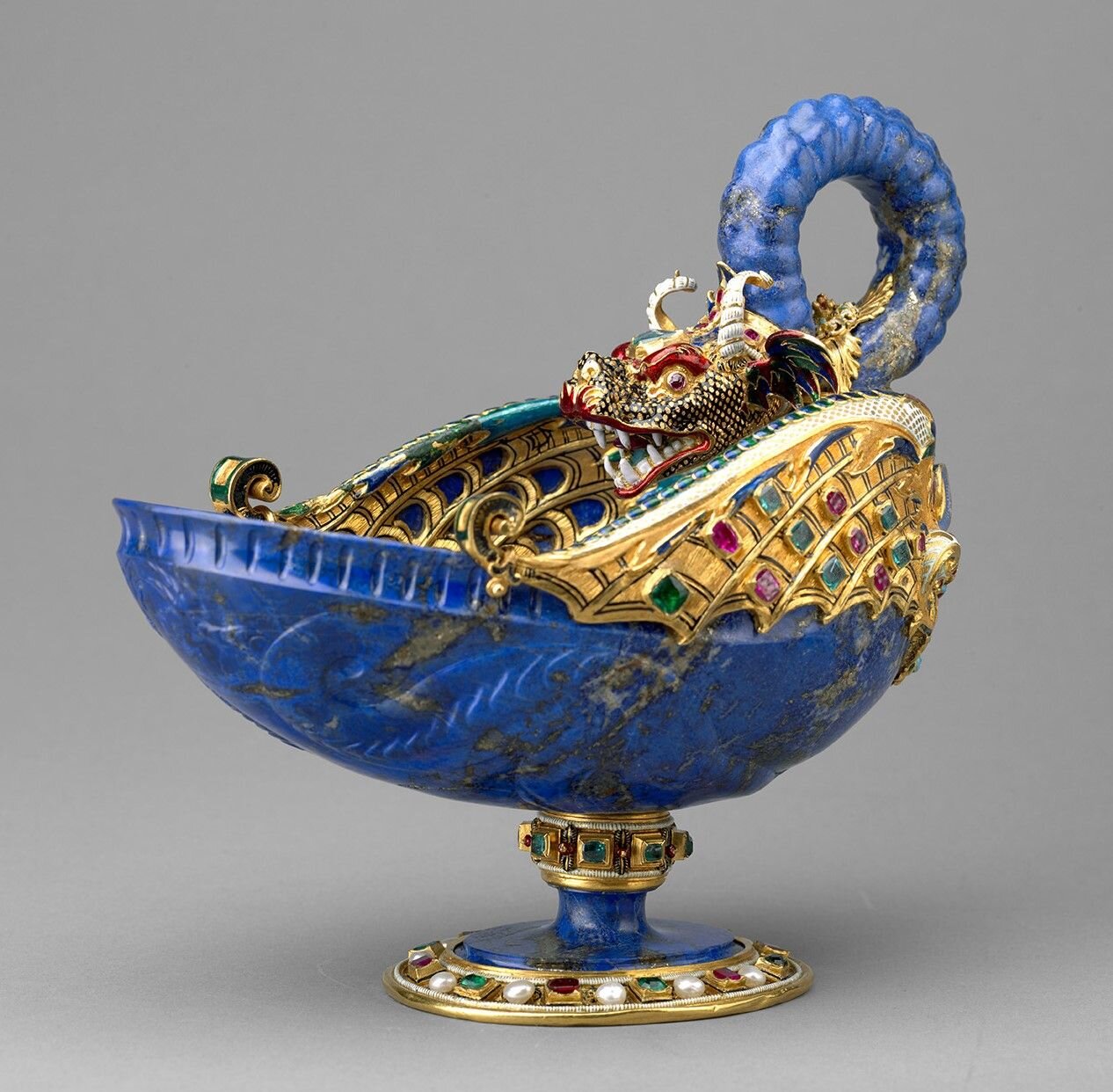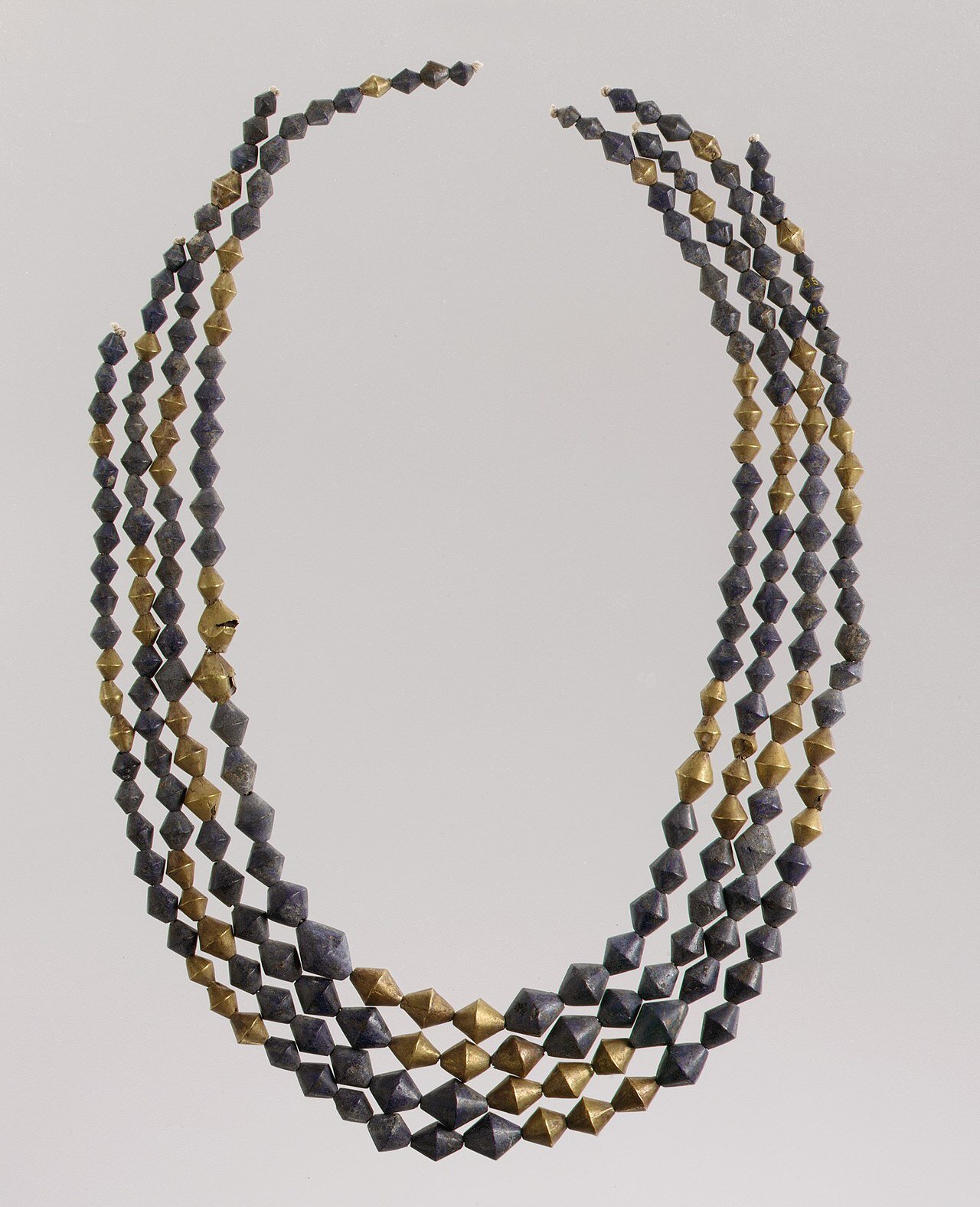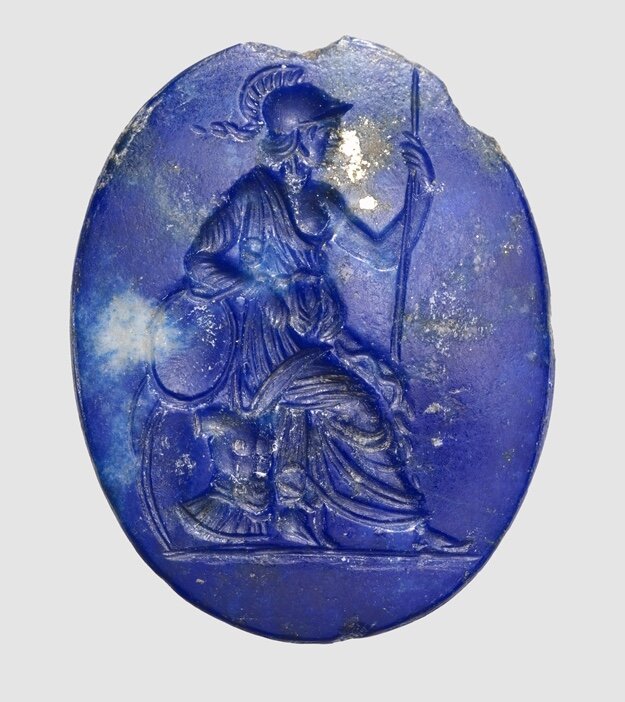
Lapis Lazuli
Lapis Lazuli has been mined since at least 7th millenium BC in today’s Afghanistan.
”Lapis” is the Latin word for stone, and “lazuli” is etymologically related to the colour blue and used as a root word for blue for several languages, including Spanish and Portuguese “azul”.
FUN FACT
The oldest mine for Lapis Lazuli was found to be older than 6000 years old, in the northeastern Afghanistan region. It was the main source of lapis for the ancient Egyptian and Mesopotamian civilisations, as well as later Greeks and Romans.
In ancient Egypt, Lapis Lazuli was a favourite stone for amulets and ornaments such as scarabs. At Karnak, the relief carvings of Thutmose III (1479-1429BC) show fragments and barrel-shaped pieces being delivered to him as tribute.
Allegedly Cleopatra had it grind into powder and use it as her iconic blue eyeshadow.

Geography Locations
Mines in north-east Afghanistan continue to be a major source of Lapis Lazuli. Important amounts are also produced from mines west of Lake Baikal in Russia, and in the Andes mountains in Chile. It is mined in smaller amounts in Angola, Argentina, Burma, Pakistan, Canada, Italy, India, and in the United States in California and Colorado.
Amazing Properties
Wisdom
Lapis Lazuli is known to the ancients as the stone of wisdom, intuition and truth. It is a powerful crystal for anyone seeking to deeper connection to self. It is said it helps to enhance your ability to turn inward and uncover the truth. One of its healing properties can help you to step into your power and authentic self.
Transition
It is especially powerful in a situation where you are in a transitioning space or period. It aids its wearer to center the energy of ownership and leadership, and to reclaim your power to take charge. It also helps to remind one to live life for oneself.
Awareness
The celestial blue in this stone was said to expand your consciousness and open your mind to the realm of knowledge and wisdom. By boosting your intuition and expanding your mental awareness, the Lapis Lazuli meaning to show you how to access the knowledge and power you have within you.

History
Historically, it was highly valued by the Indus Valley Civilisation (3000 - 1900 BCE) and Lapis beads have been found at Neolithic burials in Mehrgarh (today’s Pakistan), the Caucasus (Black Sea/Caspian sea area). It was also used in the funeral mask of Tutankhamun (1341 - 1323 BCE).
The Lapis Lazuli artefacts have been dated back to 7570 BC, where they have been found in many prehistoric settlements, including in Northern Mesopotamia, South East Iran, as well as in Sumerian city-state of Ur, inside a royal tomb in the form of dagger handles, amulets, inlays representing eyebrows and beards, and bow inlaid. Lapis Lazuli jewellery has also been found at Mycenae attesting to relations between the Mycenaean and the developed civilisations of Egypt and the East.
Pliny The Elder wrote that Lapis Lazuli is “opaque and sprinkled with specks of gold”. Because the stone combines the blue of the heavens and golden glitter of the sun.
In late classical times and as late as the Middle Ages, Lapis Lazuli was often referred as sapphire, though since Sapphire was not known before the Roman Empire, most scholars agree that they most likely are references to Lapis Lazuli, especially in the Old Testament.
By the end of the Middle Ages, Lapis Lazuli began to be exported to Europe, where it was ground into powder and made into ultramarine, the finest and most expensive of all blue pigments. Ultramarine was used by some of the most important artists of the Renaissance and Baroque, including Masaccio, Perugino, Titian and Vermeer. Ultramarine has also been found in dental tartar of medieval nuns and scribes.
Gemology
Lapis Lazuli is a sodium aluminium silicate with an isometric crystal system and a hardness of 5 to 6. The most important mineral component is lazurite. Most Lapis Lazuli also contains calcite (white), sodalite (blue), and pyrite (metallic yellow). Some samples contain other minerals such as augite, diopside, enstatite, mica and sulphur-rich geyerite. Lapis lazuli usually occurs in crystalline marble as a result of contact metamorphism.

Roman bead ornament

Sumerian necklace beads 2600–2500 BC

Ancient Egyptian plaque with an Eye of Horus

Ancient Egyptian scarab finger ring

Neo-Babylonian conical seal 7th-6th BCE

Iran - Achaemenid ornamental Lapis lazuli plate ca 500-400 BC

Lapis Lazuli Raw Stones

Greek or Roman ring stone
Associated Goddess
Athena
Athena was the goddess of wisdom, handicraft, and warfare. Athena is known as a symbol of wisdom, the arts and classical learning.
Athena liked using her wisdom, and much preferring problem-solving to keep the peace. Athena is skilled, brave and wise. She made her own way into the world and she lived her life as she wanted to live it, thus a great model for girls and women.






